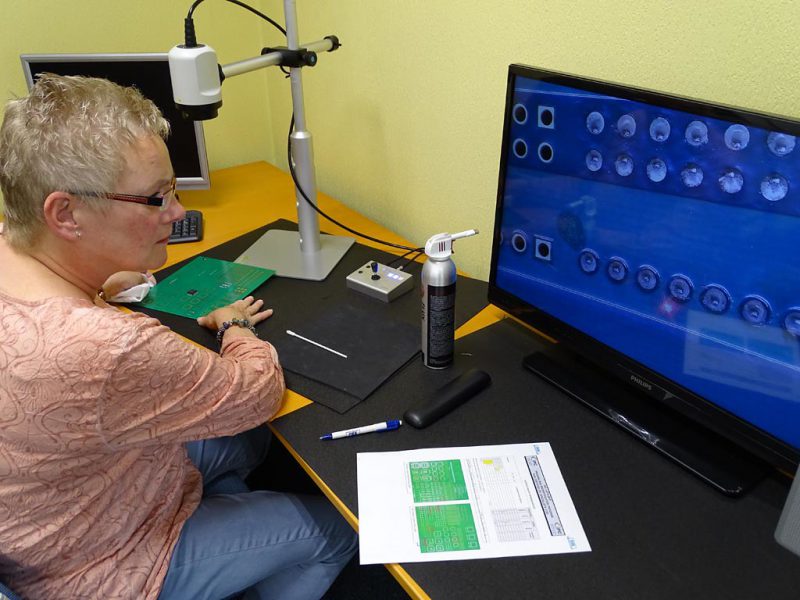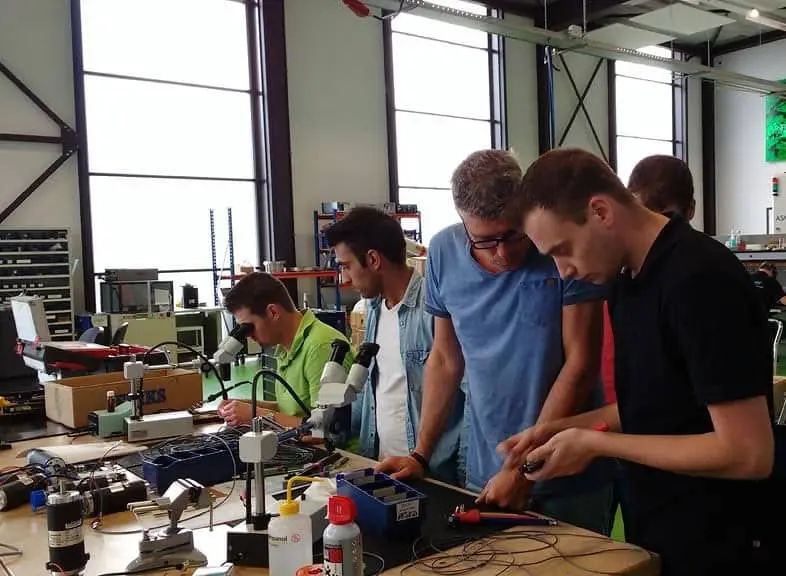Certified PIEK Operator – Quality- and Acceptance criteria for assemblies

The Certified PIEK Operator – Quality- and Acceptancecriteria for assemblies training means we talk about a training that addresses the quality requirements or acceptance requirements for assembled electronics.
All applicable aspects of assembled electronics.
Consumer electronics, professionally used electronics and electronics used in high reliability applications, like aviation, aerospace and the military world.
PB Assembly
The Certified PIEK Operator – Quality- and Acceptance criteria for assemblies training is suitable for the following target group:
The main target group for this training are quality departments, inspection departments at assemblers, EMS’s, or companies that assemble printed circuit boards on behalf of their customers, but also people at OEMs who assemble their own products and install assemblies in them, actually they process their end product.
This training is very suitable for these people. But in fact also for anyone who has an interest in the quality requirements and the acceptance criteria for assembled electronics.

The Certified PIEK Operator – Quality- and Acceptance criteria for assemblies training is interesting for employees of different companies.

The companies that have their staff follow this type of training mainly are EMS (or contract assemblers) companies, but also OEM companies that built and market their own products and either purchase assemblies, or assemble printed circuit boards themselves.
In the case where they purchase assemblies, they may use the knowledge gained from this training for the incoming inspection for the assemblies delivered to them.
PIEK: Your knowledge provider for the electronics industry
PB Repair and Rework
Application of the Certified PIEK Operator – Quality- and Acceptance criteria for assemblies training in companies.
The criteria discussed in this training are very diverse. These criteria are mainly for soldered connections. But also on other aspects , like the installation of the assembled printed circuit boards in their housings. Aspects like that and much more on what you have to pay attention to, so all happens in the right way and meets the requirements.
Issues like that are also discussed. The correct handling of assembled printed circuit boards is part of it as well, in particular ESD, so how to avoid static discharges and how to handle these themes correctly. Attention is paid on avoiding problems that could arise from contaminations and more matters like that are brought up. It is a very diverse training that approaches all these aspects.

The added value of Certified PIEK Operator – Quality- and Acceptance criteria for assemblies certification training and certification.

The moment you have followed this training, you can immediately apply what you have learned in practice. People who work in the quality departments and have to carry out inspections on the assembled printed circuit boards, can put this into practice immediately and it will help in taking the right decisions regarding: does the product meet the requirements yes or no?
Will it function correctly once it has been installed in the end product? So some certainty at taking decisions, that is what is also gained. Employees that have the background, who know what the quality requirements are and who can use them correctly are of course valuable within a company.
In particular this goes for inspection departments where decisions are made like: will the assembled printed circuit board be used or not, does it meet the requirements? If I am a supplier of these assembled printed circuit boards to industry, can I deliver them to my customer or not?
These are, of course, important decisions that must be taken and the inspectors play a key role in this. Important then that they have the knowledge to be able to make such important decisions and especially that is what you will learn during this training. This is an indication of the added value of this training.
People who are trained have gained certainty like: “I can make the right decisions”, “I know what the product must meet, I know when I have to take the decision: no, this does not meet the requirements, this will not be further processed. This also is added value, because in this way you also build in product security and prevent products from being delivered to customers that do not meet the requirements.
Which could lead to complaints from that customer. As a supplier of assemblies you don’t want to lose your face or customers. Another example of added value of this training. In the basis it is a training for the people who take decisions and support them in making the right decisions in the right way. Assure they can do their jobs well.

